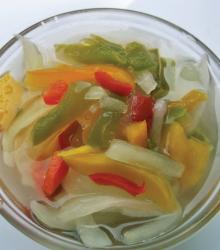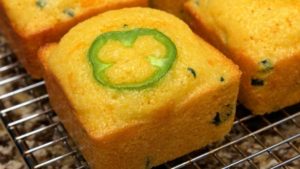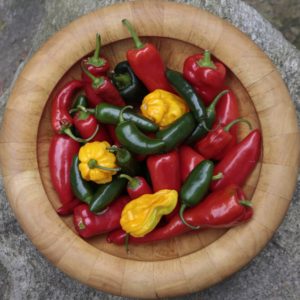Written by Barb Randall – Lake Oswego Review
My favorite farmers market vendor had pickling cucumbers this week. I didn’t buy any, but after my sister bragged that she had made a batch of our Grandma Fanny’s dill pickles, I knew pickling was in my future.
And when my friend, Austin Durant, founder of the Fermenters Club and organizer of the Oregon Fermentation Festival, sent a release about the second-annual Oregon Fermentation Festival happening Sept. 10, I knew I’d be pickling this weekend.
Are pickles fermented? I called Austin for clarification.
“All fermented foods are pickled, but not all pickles are fermented,” he said.
He explained that vinegar, which is a fermented food, is used to make pickles, and the lactic acid of the vinegar is the preservative in pickles, and will keep out pathogens. Since vinegar is shelf-stable and distilled, pickles do not have live bacteria, in other words, there are no probiotics in pickles.
“Fermented foods are made with a brine, a mixture of water and salt,” he said. “Which naturally produces lactic acids to preserve the foods, which encourages the growth of probiotics, or good bacteria and nutrients.”
So what’s the difference?
There are two types of pickles:
n Quick, or unfermented, pickles are made in one or two days by adding acid in the form of vinegar to vegetables. It is critical to add enough vinegar to prevent bacterial growth.
n Brined, or fermented, pickles require several weeks of “curing” at room temperature. During this period, colors and flavors change. A brine made of water and salt reacts with the starches and sugars in the foods, and is converted into lactic acid by bacteria. The lactic acid production is what gives fermented foods their unique sour smell and flavor, and is also what makes fermented foods live, nutritive superfoods.
During the fermentation process, probiotics, or healthy bacteria are produced. Probiotics are known to be effective in treating a variety of conditions, and more and more is being discovered about the link between the bacteria composition of our bodies and overall health.
Probiotic-rich fermented foods have a variety of health benefits: They aid digestion, enhance the nutrient availability of food and ward off harmful pathogens in the digestive system. They also help to enhance immune system functioning, affect lipid metabolism, have cancer-fighting effects and other benefits.
Want to learn more? You can by attending the second-annual Oregon Fermentation Festival from 11 a.m.-6 p.m. Saturday, Sept. 10, at Kruger’s Farm, 17100 N.W. Sauvie Island Road, Portland. Tickets are $19 general admission and $30 for the Ambrosia Garden ticket, for those 21 and older, which allows holders to sample 10 tastes of local and regional beer, wine, cider and mead — all fermented foods.
The festival includes a number of presentations, workshops and an opportunity to make a jar of pickles, live music, vendor samples and a marketplace to buy fermentation and pickling equipment.
If you cannot attend the festival this weekend, attend Oregon State University’s Fermented Foods class from 6-9 p.m. Sept. 22, at the Clackamas County Extension Office. Seating is limited; get more information and register by calling 503-655-8631. They offer a variety of food preservation classes through the fall.
I have fond memories of making Grandma Fanny’s dill pickles. As a safety factor, my sister and I have had the recipe reviewed by OSU Extension, to ensure it is up-to-date with food safety guidelines. On the website extension.oregonstate.edu/community/food-preservation you can find a wealth of information about pickling and fermenting, as well as recipes for how to pickle just about anything.
If you still have questions, call the OSU Food Preservation and Safety Hotline, 800-354-7319. It is open 9 a.m.-4 p.m. Monday-Friday through Oct. 19.
I am sharing their recipe for Quick Kosher Dills today. It’s simple and will give you tasty results.
Bon Appétit! Make eating an adventure!
Quick Kosher Dills
Yield 6 to 7 pints or 3 to 4 quarts
4 pounds pickling cucumbers, about 4 inches long
3 cups water
3 cups vinegar (5 percent acidity)
1/4 cup pickling salt
14 garlic cloves, split
14 heads of fresh dill
28 peppercorns
2 teaspoons hot red pepper flakes or 14 whole chiles (optional)
Wash cucumbers. Cut 1/16-inch off blossom end but leave 1/4-inch of stem on the other end. Cut in half lengthwise. Heat salt, vinegar and water to boiling. Pack cucumbers into sanitized pint or quart jars, adding 4 garlic halves, 2 heads dill and 4 peppercorns per jar. Add 1/4 teaspoon chili flakes or 2 chiles per pint, if desired.
Pour hot vinegar solution over cucumbers leaving 1/2-inch headspace. Remove air bubbles and adjust headspace, if needed. Wipe rims and process as follows.
If at an altitude of 1,000-6,000 feet, process pint jars 15 minutes and quarts for 20 minutes.
(Recipe courtesy from “Pickling Vegetables” on the OSU Extension website, extension.oregonstate.edu/community/food-preservation.)
Randall welcomes your food questions and research suggestions. She can be reached at 503-636-1281 ext. 100 or by email atbrandall@lakeoswegoreview.com. Follow her on Twitter @barbrandallfood.





